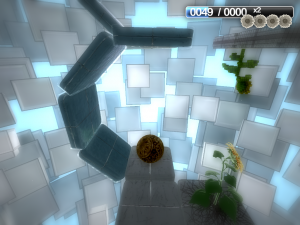Puzzle Dimension
 Steam had one of its big sales over Thanksgiving, including a different five-dollar “indie [adjective] pack” with multiple games each day for five days. I wound up buying four of them. I really should close this loophole in the Oath. Anyway, now that I have all these games, I feel like I should at least give some of them a try. Finishing Bioshock can wait for the weekend, when I have the concentrated attention to spare. Weekday nights, I’m coming to believe, are for little indie puzzle games with self-contained levels — things where I don’t have to track a lot of state.
Steam had one of its big sales over Thanksgiving, including a different five-dollar “indie [adjective] pack” with multiple games each day for five days. I wound up buying four of them. I really should close this loophole in the Oath. Anyway, now that I have all these games, I feel like I should at least give some of them a try. Finishing Bioshock can wait for the weekend, when I have the concentrated attention to spare. Weekday nights, I’m coming to believe, are for little indie puzzle games with self-contained levels — things where I don’t have to track a lot of state.
Which brings us to Puzzle Dimension. This is a puzzle-platformer about rolling a ball around on a grid, skirting obstacles and collecting flowers; once you have all the flowers on a level, an exit portal opens. Now, I say “rolling a ball”, but that’s only skin-deep. There’s nothing about the mechanics that suggests ball-rolling. What you’re really doing is moving an avatar in discrete steps in cardinal directions, and sometimes jumping over tiles. The gameplay seems designed not for keyboard and mouse, not even for a modern gamepad, but for an Atari joystick, a four-direction controller and one button. (Even the menus don’t recognize the mouse.)
I suppose that’s not quite true. It does support an additional button to toggle “camera mode”, which lets you get an overview of the playfield and rotate it freely to view it from any angle (again using four-direction digital controls to do this). This is important because most levels are intensely three-dimensional, and just grasping the geometry can be the key to solving them. The surface you’re on can go through 45-degree bends; sometimes it’s possible to wind up on the opposite side from where you started. The world is always presented so that you’re upright, but it partakes a little of the same gravity-reversal theme as VVVVVV. In particular, if you roll or jump off the edge of a pathway, you fall straight down — relative to your current orientation. Some levels require you to exploit this.
Also of interest is the use of pixelation. Every tile, and everything on a tile (flowers, teleporters, springboards, etc.), starts off rendered in blocky voxels. They become fully-rendered smooth objects when you move onto or adjacent to them, as if your presence is finishing something rough-hewn. This lets you visually keep track of where you have and haven’t been, and also apparently works into the scoring system (which I haven’t paid much attention to yet). Now, obviously there are a lot of games out there that use deliberate pixelation as a stylistic thing, but I think this is the first time I’ve seen it used to denote a marked state, like italics.
 Comments(1)
Comments(1)
The gameplay seems designed not for keyboard and mouse, not even for a modern gamepad, but for an Atari joystick, a four-direction controller and one button.
You could test that out if you wanted:
http://www.thinkgeek.com/electronics/retro-gaming/2600/